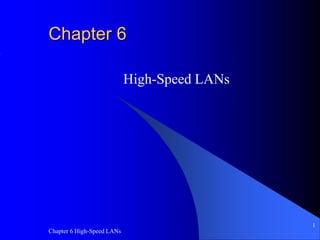Chapter 6 discusses high-speed LAN technologies, including Fast Ethernet, Gigabit Ethernet, and Fibre Channel, addressing the evolution driven by increasing computing power and network requirements. It covers classical Ethernet's limitations, solutions like CSMA/CD protocol, and the advantages of layer 2 switches over hubs. The chapter also outlines the specifications and requirements for Fibre Channel and wireless LANs, highlighting the essential features needed for high-speed connectivity and performance.


































